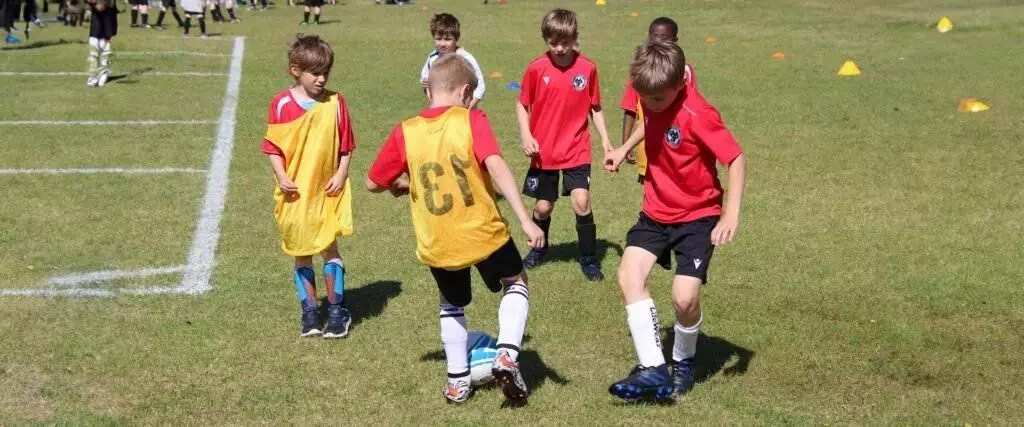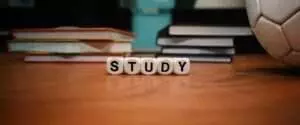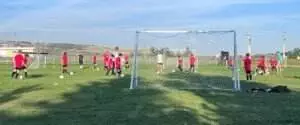At Cochrane Wolves FC, we know that soccer can be as complex as it is exciting. For parents and guardians who are new to the sport, understanding the rules and regulations is key to supporting your child and enjoying the game to its fullest. Whether you’re watching your child’s matches or tuning in to professional games, having a solid grasp of soccer’s basic and lesser-known rules will enhance your experience. In this blog post, we’ll break down the essential rules of soccer, clear up common misunderstandings, and explain some of the more obscure regulations using easy-to-understand analogies.
The Basics: Key Rules Every Parent Should Know
The Objective of the Game
At its core, soccer is a simple game: two teams compete to score more goals than the other by getting the ball into the opposing team’s net. Each match is typically 90 minutes long, divided into two 45-minute halves.
The Field and Players
- The Field: A standard soccer field is rectangular, with two goals at either end. The field’s size can vary, but it usually measures between 100-130 yards long and 50-100 yards wide.
- Teams: Each team consists of 11 players, including one goalkeeper. The goalkeeper is the only player allowed to use their hands, and only within their penalty area.
Offside Rule: The Most Misunderstood Rule
The offside rule is often confusing, even for seasoned fans. Here’s a simple way to understand it:
Analogy: Imagine a game of freeze tag. To be “offside” is like being caught moving after the freeze signal. In soccer, a player is offside if, at the moment the ball is passed to them, they are closer to the opponent’s goal than both the ball and the second-last defender (excluding the goalkeeper). However, if the player is in their own half or level with the second-last defender, they are onside and can receive the ball legally.
Fouls and Free Kicks
Fouls occur when a player commits an unfair act, such as tripping an opponent, handling the ball deliberately (except the goalkeeper in their area), or playing dangerously. Depending on the severity, fouls can result in free kicks, penalty kicks, or even yellow and red cards.
- Free Kick: Awarded after most fouls. It can be either direct (can score directly) or indirect (must touch another player before scoring).
- Penalty Kick: Awarded for a foul committed by the defending team inside their penalty area. The kick is taken from the penalty spot, with only the goalkeeper defending.
Yellow and Red Cards
Soccer uses a card system to discipline players:
- Yellow Card: A warning for less severe offenses like unsporting behavior. Two yellow cards in a game equal a red card.
- Red Card: Results in an immediate ejection from the game for serious offenses like violent conduct. The team must continue with one fewer player.
Lesser-Known Rules: Beyond the Basics
The Advantage Rule
One of soccer’s more subtle rules is the advantage rule. When a foul is committed, but the offended team retains a significant advantage (e.g., they are in a strong attacking position), the referee may choose not to stop play. The idea is to avoid penalizing the team in possession by halting their momentum.
Analogy: Imagine you’re driving and have the right of way at a green light, but someone else runs a red light. Instead of stopping you abruptly, the traffic system lets you keep going because you’re in a better position to continue safely.
The Drop Ball
A drop ball occurs when play is stopped for reasons not covered by other rules, such as an injury or an interference that wasn’t caused by either team. The referee drops the ball between two opposing players, and play resumes when the ball touches the ground.
Analogy: Think of it as a “do-over” in a playground game when something unexpected happens, and neither team is at fault.
The Back-Pass Rule
A goalkeeper cannot pick up the ball if it has been deliberately kicked to them by a teammate. If they do, the opposing team is awarded an indirect free kick from where the goalkeeper touched the ball.
Analogy: Picture this as a game of catch, where you’re not allowed to throw the ball underhand directly to someone else. It forces players to be more strategic and prevents time-wasting.
The Offside Trap
Teams often use the offside trap as a defensive strategy. This involves defenders moving upfield just before the opposing team plays a pass, aiming to catch the attacking players offside. It’s a risky move but can be effective when timed perfectly.
Analogy: It’s like a game of musical chairs where the defenders try to “pull the chair” out from under the attackers just as the music stops, leaving them stranded without a legal play.
Common Misunderstandings: Clearing Up Confusion
“Why Was That Goal Disallowed?”
Goals can be disallowed for several reasons, the most common being offside, handball, or a foul committed by the attacking team just before the goal. Understanding these rules helps explain why some seemingly legitimate goals are ruled out.
“Why Didn’t the Referee Call That Foul?”
Referees often use their discretion when deciding whether to call a foul. Factors like the severity of the contact, the intent behind the play, and whether the player was trying to play the ball are all considered. The advantage rule also plays a role, as mentioned earlier.
“What’s the Difference Between a Direct and Indirect Free Kick?”
A direct free kick allows the player to shoot directly at the goal, whereas an indirect free kick requires the ball to touch another player before a goal can be scored. Indirect free kicks are usually awarded for less serious offenses or technical infringements like the back-pass rule.
Soccer as a Team Effort: Understanding the Role of Each Position
While the rules are vital, understanding how the game is played and each player’s role can also help parents and guardians appreciate the sport more deeply.
Goalkeeper
The goalkeeper’s primary role is to stop the opposing team from scoring by blocking shots on goal. They are the only player allowed to use their hands but only within their penalty area.
Defenders
Defenders are responsible for preventing the opposition from scoring. They play near their goal and work to intercept passes, block shots, and tackle opposing players.
Midfielders
Midfielders are the engine of the team, covering the most ground. They support both the defense and the attack, often controlling the game’s tempo through passing, dribbling, and tackling.
Forwards
Forwards, or strikers, are primarily responsible for scoring goals. They play closest to the opponent’s goal and use their speed, skill, and positioning to create and convert scoring opportunities.
Conclusion: Enjoying the Game
Understanding soccer rules and regulations can greatly enhance your enjoyment of the game, whether you’re watching your child play at Cochrane Wolves FC or cheering on your favorite team. The basics like offside, fouls, and cards form the foundation of the game, while lesser-known rules like the advantage rule and the back-pass rule add layers of strategy and excitement.
By familiarizing yourself with these rules and how they are applied on the field, you’ll not only be able to follow the action more closely but also help your child navigate the sport with greater confidence and understanding.
Thank you for joining us in this exploration of soccer rules and regulations. We hope this guide helps you appreciate the beautiful game even more. Stay tuned for more insights and tips from the world of soccer here at Cochrane Wolves FC!





